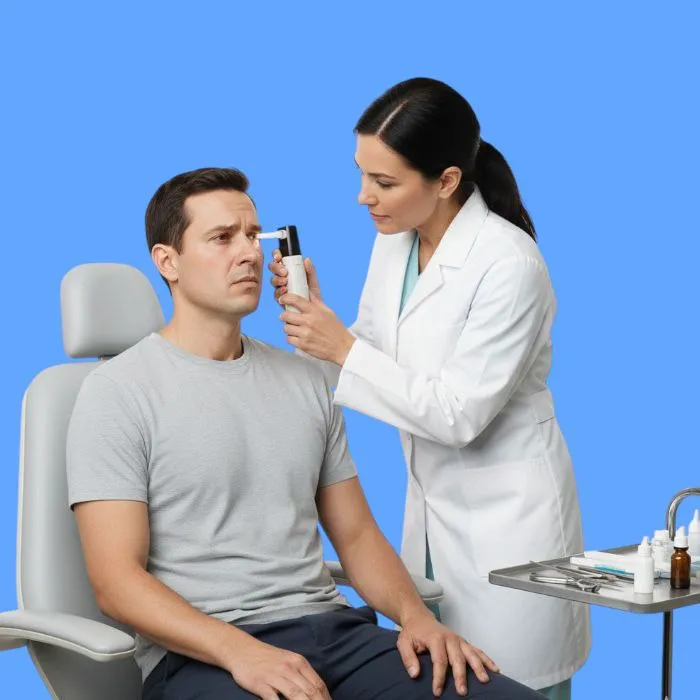What is dry eye?
Dry eye is a condition that occurs when the eyes don't produce enough tears or when tears evaporate too quickly, leading to inadequate lubrication of the eye's surface and causing a burning sensation and discomfort.
Causes of dry eye
The most common causes of dry eye include:
- Prolonged use of phones and computers.
- Aging, especially after age 40.
- Wearing contact lenses.
- Living in dry or air-conditioned environments.
- Diseases such as diabetes and rheumatoid arthritis.
- Certain medications, such as antihistamines.
- Weakness of the glands responsible for tear production.
Symptoms of dry eye
Several symptoms may be noticed, including:
- A burning or stinging sensation in the eyes.
- Redness of the eyes.
- A feeling of having a foreign object in the eye.
- Sometimes blurred vision.
- Sensitivity to light.
- Increased tearing as a reaction to dryness.
- Difficulty wearing contact lenses.
How to Diagnose Dry Eye
Dry eye is diagnosed through a clinical eye examination and tear production measurement using the Schirmer test.
The doctor may also assess tear quality and examine the corneal surface to determine the severity of the dryness and prescribe the appropriate treatment.
Treatment for Dry Eye

There are several ways to treat dry eye, including:
- Using lubricating eye drops.
- Applying lubricating ointments while sleeping.
- Reducing screen time.
- Treating any existing infections.
- Avoiding contact lenses when symptoms worsen.
- Blocking tear ducts in some cases.
When to See a Doctor
It is recommended to consult a doctor in the following cases:
- Symptoms persist for an extended period.
- Severe blurred vision.
- Persistent redness of the eye.
- Pain in or around the eye.
- Difficulty opening the eye upon waking.
- No improvement despite using eye drops.
- Unusual eye discharge.
Tips for Preventing the Condition
Some of the most important preventative measures include:
- Taking breaks while using electronic devices.
- Regularly moisturizing the eyes. Drink plenty of water.
- Avoid dry or air-conditioned environments as much as possible.
- Wear glasses that protect from wind and dust.
- Avoid smoking.
- Eat foods rich in Omega-3 fatty acids.
Frequently Asked Questions
Does dry eye cause blurred vision?
It may temporarily affect visual clarity.
Can dry eye be cured permanently?
It often improves, but it may require ongoing treatment.
Do contact lenses cause dry eye?
Yes, especially with prolonged use.
Is dry eye related to allergies?
Yes, it can occur with some types of allergies.
Article Summary
Dry eye is a condition that occurs when the eye doesn't produce enough tears or they evaporate too quickly, causing burning and blurred vision.
Treatment involves using lubricating eye drops, reducing screen time, and following preventative measures to improve the condition.